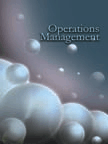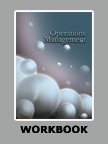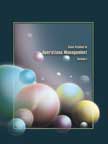Xerox: The Benchmarking Story
|
|
ICMR HOME | Case Studies Collection
Case Details:
Case Code : OPER012
Case Length : 14 Pages
Period : 1982 - 2002
Organization : Xerox
Pub Date : 2006
Teaching Note : Available
Countries : USA
Industry : Office Automation
To download Xerox: The Benchmarking Story case study
(Case Code: OPER012) click on the button below, and select the case from the list of available cases:

Price:
For delivery in electronic format: Rs. 500;
For delivery through courier (within India): Rs. 500 +Shipping & Handling Charges extra
» Operations Case Studies
» Case Studies Collection
» ICMR HOME
» View Detailed Pricing Info
» How To Order This Case
» Business Case Studies
» Case Studies by Area
» Case Studies by Industry
» Case Studies by Company 
Please note:
This case study was compiled from published sources, and is intended to be used as a basis for class discussion. It is not intended to illustrate either effective or ineffective handling of a management situation. Nor is it a primary information source.
Chat with us

Please leave your feedback

|
|




<< Previous
Background Note Contd...
|
In 1969, it set up a corporate R&D facility, the Palo Alto Research Center (PARC),
to develop technology in-house. In the 1970s, Xerox focused on introducing new
and more efficient models to retain its share of the reprographic market and
cope with competition from the US and Japanese companies.
While the company's revenues increased from $ 698 million in 1966 to $ 4.4
billion in 1976, profits increased five-fold from $ 83 million in 1966 to $ 407
million in 1977. As Xerox grew rapidly, a variety of controls and procedures
were instituted and the number of management layers was increased during the
1970s.
|

|
This, however, slowed down decision-making and resulted in major delays in
product development. In the early 1980s, Xerox found itself increasingly
vulnerable to intense competition from both the US and Japanese competitors.
According to analysts, Xerox's management failed to give the company
strategic direction.
It ignored new entrants (Ricoh, Canon, and Sevin) who were consolidating
their positions in the lower-end market and in niche segments. The company's
operating cost (and therefore, the prices of its products) was high and its
products were of relatively inferior quality in comparison to its
competitors. Xerox also suffered from its highly centralized decision-making
processes.
|
|
As a
result of this, return on assets fell to less than 8% and marketshare in
copiers came down sharply from 86% in 1974 to just 17% in 1984. Between
1980 and 1984, Xerox's profits decreased from $ 1.15 billion to $ 290
million (Refer Exhibit I). In 1982, David T. Kearns (Kearns) took over
as the CEO.
He discovered that the average manufacturing cost of copiers
in Japanese companies was 40-50% of that of Xerox. As a result, Japanese
companies were able to undercut Xerox's prices effortlessly. Kearns
quickly began emphasizing reduction of manufacturing costs and gave new
thrust to quality control by launching a program that was popularly
referred to as 'Leadership Through Quality.' |
As part of this quality program, Xerox implemented the
benchmarking program. These initiatives played a major role in pulling Xerox out
of trouble in the years to come. The company even went on to become one of the
best examples of the successful implementation of benchmarking.
Excerpts >>
|
|










